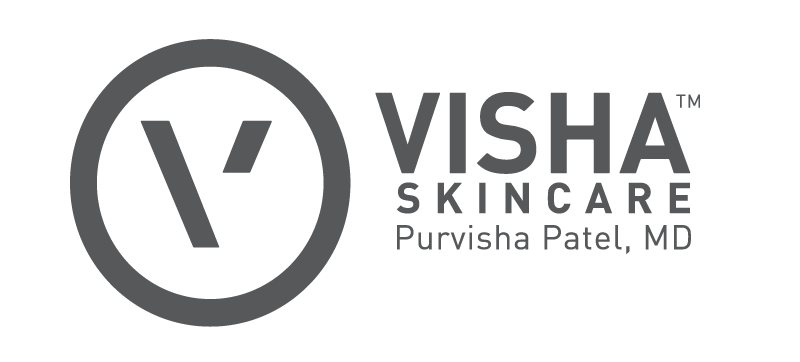
Well and Good posted "Do pore strips work? Dermatologists reveal the truth, once and for all [Reviews & Guide]" featuring Dr. Purvisha Patel and Visha Skincare. The article features Visha Skincare Advanced Purifying Cleanser.
People love to use skin-care products that work, sure, but they also love to use products that are satisfying. Beauty products like Baby Foot ($25) and peel-off face masks are fun because you get to watch dead skin cells come off centimeter by centimeter. Then there are pore strips, which suck up all of the little blackheads nesting on your nose. But do pore strips work, and is that satisfying treatment really doing your skin any favors?
As a refresher, your pores are really small openings on your skin that oil and sweat come out of, and they can get pretty easily clogged. “Pores can get filled with dirt, oil, sweat, and makeup,” says Purvisha Patel, MD, board-certified dermatologist and founder of Visha Skincare, who adds that they can also get clogged by skin cells that aren’t exfoliated (reminder: this is why regular exfoliation is so important). One instance of clogged pores is a blackhead, which is oil that’s been oxidized in an open pore.
Your nose happens to be a hotspot for blackheads. “The nose is a perfect storm to make blackheads, because the pores are stretched out on a convex surface,” says Dr. Patel. Pore strips come in because they’re able to mold around the nose, stick to it and cling to the pore buildup, then—ideally—take it all out of your skin. Keep scrolling for the low-down on whether pore strips really work, plus how to use them, according to dermatologists.
Do pore strips work?
If you’ve ever used a pore strip on your nose, you’d agree that pulling it off (similar to how you’d pull off a Band-Aid) feels like it works to remove blackheads. “Pore strips are typically made of an adhesive that sticks to the skin and takes the superficial layer of the blackhead out,” says Ellen Marmur, MD, a New York-based dermatologist. “It is typically just pulling out oil and sebum.” Another reason why using them is so satisfying is that they can temporarily make your pores appear smaller cleaner, she says (plus you can actually see the gunk that comes out of your nose on the other side of the strip).
That said, pore strips only successfully pull out oil and sebum when they’re used correctly and on the right skin type. “People who are allergic to adhesive, have sensitive skin, or those that are on a prescription retinoid product are not good candidates for pore strips, because more irritation and even skin damage could occur,” says Dr. Patel. Using a strong retinol, because of the increased cell turnover, makes your skin more delicate, so anything abrasive—or really sticky, like a pore strip—can potentially rip the top layer of your skin off. A similar effect could happen if you’re on a strong acne medication. And, if you have a sensitive skin condition like rosacea, Dr. Marmur recommends to skip pore strips, since it’d be ripping off skin that’s already vulnerable.
Now for the good news: If your skin is on the normal or oily side, dermatologists say that you can benefit from using pore strips to treat blackheads. “Oily skin does best with pore strips since there are more blackheads to address,” says Dr. Patel. To use them properly, she says it’s key to start with a freshly cleansed, dry face—otherwise, makeup or an oily surface can make the strip not stick. “Use a good cleanser that dissolves oil,” she says, suggesting something purifying—options include the Visha Skincare Advanced Purifying Cleanser ($30) or Neutrogena Fresh Foaming Cleanser ($5). And it’s important to be gentle. “Make sure to follow the directions properly and do not let the strips sit for too long, otherwise the adhesive can pull off skin,” she says.
Pore strips are not everyday products, though; Dr. Patel and Dr. Marmur stress that these are for occasional use. “I would recommend using a pore strip no more than once a week,” says Dr. Marmur. If you’re just not into these for treating your blackheads, though, you could always turn to a chemical exfoliant or a detoxifying face mask instead. “The combination of fruit acids and tea tree oil help to shrink pores so that less oil can accumulate,” says Dr. Patel (fruit acids are alpha-hydroxy acids or beta-hydroxy acids for exfoliation, and tea tree oil is a natural antibacterial). Regular retinol use can help to keep things clear, too, since it’s stimulating faster cellular turnover.
